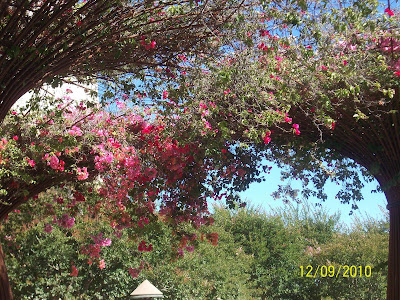These wildly romantic names describe a small, purple artichoke much loved in France and Italy but hard to find even here on the Central Coast. The Farmer’s Market in Santa Barbara sometimes has some artichokes for sale at this time of year, but the plants are as elusive as the Snark .
.
Wanting some for the vegetable garden, because once having tasted one, steamed briefly and eaten whole, choke and all—is to become a hopeless addict. These violet beauties can also be cut in half and grilled, which is how they usually appear in restaurants.(Recipe below)
The plants of Romagna artichokes are available (Island Seed and Feed). Romagna is purple, but unpredictable, it produces atrichokes of various sizes. In theory, you harvest the large center artichoke, then it should produce lots of small purple ones as side shoots. Stay tuned on how this actually works.
 |
The seeds of Violet de Provence, Violetta Precoce, and Romagna are available (Baker Creek Heirloom Seeds) as is Violetto from Territorial Seed Co.in Oregon.
Violetto di Toscano which hasn’t yet been located as seeds or plants looks a lot like the artichokes from the SB Farmer's market which might be Baroda Farms proprietary hybrid Fiesole. These are not sold through nurseries. (apparently Baroda sells only through large retailers such as Whole Foods, but as a company they are as guarded about their wares, as the Chinese were about their silk worms! )
This Toscano could be the enigmatic Violetto of Territorial Seeds.
Note: photos are from ( http://www.fotosearch.com/FDC003/925352/) .
When you find your violet Try this recipe from Saveur magazine: Pasta with Grilled Baby artichokes,dressed with olive oil and garlic
When you find your violet Try this recipe from Saveur magazine: Pasta with Grilled Baby artichokes,dressed with olive oil and garlic
1 lb. (about 10) baby artichokes with stems, 2 tbsp. minced fresh parsley
trimmed and halved lengthwise, 4 cloves garlic ,minced 2⁄3 cup freshly grated Parmesan
4 tbsp. unsalted butter
Zest and juice of 1 lemon6 tbsp. extra-virgin olive oil
Kosher salt and freshly ground black pepper, to taste
1⁄2 lb. spaghetti
1. Put artichokes, 2 tbsp. lemon juice, and 6 cups water in a 4-quart saucepan. Boil, reduce heat, and simmer until crisp-tender, about 5 minutes. Drain artichokes; transfer to a medium bowl; toss with 4 tbsp. oil and salt and pepper. Heat a 12" grill pan over high heat. Place artichokes cut side down on grill pan and cook until tender about , 6 minutes per side. Return grilled artichokes to the bowl and cover with plastic wrap; set aside.2. Bring a large pot of salted water to a boil and add pasta; cook, stirring occasionally, until al dente, 6–7 minutes. Drain pasta, reserving 1 cup pasta water; set aside. Heat remaining oil and 3 tbsp. butter in a 12" skillet over medium heat; add chile flakes and garlic and cook, stirring, until garlic is soft, 4–5 minutes. Add remaining lemon juice along with zest, cooked pasta, and 1⁄2 cup Parmesan and toss together, adding rerved pasta water as needed to create a smooth sauce. Stir in remaining butter and parsley and season with salt and pepper.
































